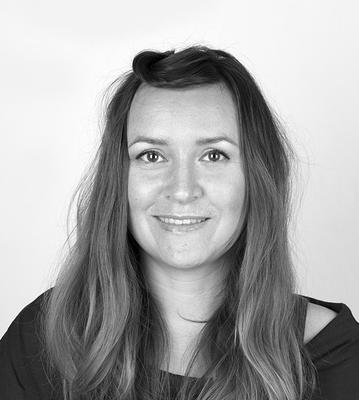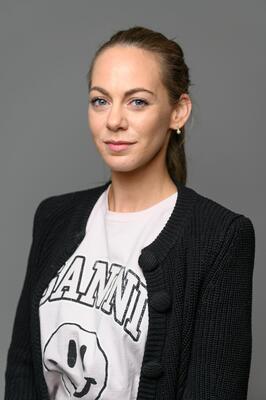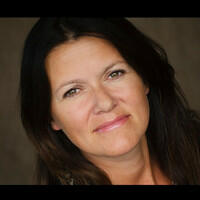PRESS RELEASE, FEBRUARY 22
Hannah Ryggen Triennale 2022 launches under the theme Anti-Monument in large-scale collaboration among Trondheim/Trøndelag art institutions
This year’s Hannah Ryggen Triennale takes the theme Anti-Monument as a point of departure to explore the famed textile artist’s legacy through the lens of thirty contemporary artists. For the first time since its initiation in 2016, Nordenfjeldske Kunstindustrimuseum collaborates with other key Trondheim art institutions on the Triennale: Kunsthall Trondheim, Trondheim kunstmuseum, K-U-K, as well as Ørland/Bjugn Art Society.
The theme Anti-Monument takes its starting point in Hannah Ryggen’s tapestry We Are Living on a Star (1958), which was damaged in the right-wing terrorism attack in Oslo on 22 July 2011. The gash in the tapestry is a salient symbol of the loss of innocent lives that must never be forgotten. The scarred artwork is an anti-monument; it comprises a negative space, a painfully charged void.
The Triennale takes place in the wake of movements like Black Lives Matter, in which value systems are avidly being discussed and statues stormed, toppled, and beheaded. Anti-Monument proposes a radical shift of form in the tradition of monuments and memorials, connecting to decolonial, feminist, and anti-hegemonic artistic practices.
Anti-monumental perspectives
The exhibitions constituting the Hannah Ryggen Triennale 2022 feature artists and works that can varyingly be seen in the light of Ryggen’s (1894–1970) legacy. The participating contemporary artists criticize oppressive systems and believe in the strength of their works to both prompt the senses and convey abstract yet potent ideas. Ryggen’s works are also richly represented in the exhibitions, and naturally take their place among the contemporary artists’ works. Juxtaposed, the many different works in the Hannah Ryggen Triennale act as contributions to important ongoing discourses in the global community.
In Nordenfjeldske Kunstindustrimuseum’s three-part main exhibition Anti-monument, curated by Solveig Lønmo, fifteen tapestries by Ryggen meet fifteen international contemporary artists’ works, some of them made specifically for the Triennale. The exhibition is spread across the venues Gråmølna in Trondheim, and the Hannah Ryggen centre and Austråttborgen in Ørland. Through strong dialogues between an array of works, the exhibition suggests nuances that are valid without being carved in stone.
At Kunsthall Trondheim, the exhibition Unweaving the binary code, curated by Stefanie Hessler and Katrine Elise Pedersen, explores the influence of weaving on early computer history. Taking the legacy of female mathematician Ada Lovelace (1815–1852) as a point of departure, eleven contemporary artists explore the connections between the weft and warp of tapestries and the zeros and ones of code, and propose various ways to introduce glitches that undo the binaries of gender and other established categories and divides. Three solo project exhibitions running parallel to the main show will be launched throughout the summer, with support of Posten Moderne.
In Trondheim kunstmuseum’s site in Bispegata, an exhibition dedicated to Hege Lønne (1961–2018), curated by Marianne Zamecznik, presents the first retrospective of Trondheim-born artist, who was active in both Poland and Norway thoughout her carreer. The exhibition highlights Lønne’s artistry in which sculpture and performance impacted one another, in the context of the Trondheim art scene in the second half of the 20th century and her chosen exile in Poland in the 1980s. Nature was central to her art, and she spoke early on about climate change and the environment. She used simple materials to create scenes for interpersonal exchange as well as stories about human's place in nature.
K-U-K presents two group exhibitions centered around the artists Julie Ebbing and Anne-Karin Furunes, both curated by Cathrine Hovdahl Vik. Power structures, identity and social hierarchies are pervading themes in the two exhibitions, which both focus on gender in different ways. Ebbing invites artists from the dynamic group Hannah Ryggen Army, while art professor Furunes exhibits with some of her former students.
A program of public events will accompany the exhibitions throughout the spring/summer, including a panel conversation in partnership with Posten Moderne on the future of art institutions in Trondheim and the importance of collaboration.
An exhibition catalogue co-published with Archive Books will be launched in the summer, including newly commissioned texts and documentation of the exhibitions.
A groundbreaking initiative for the region
– We are pleased that the Hannah Ryggen Triennale this year is arranged with so many new partners. Together with several of Trondheim’s art institutions we are now lifting the triennial to garner even greater momentum in the region, says project manager and curator Solveig Lønmo at Nordenfjeldske Kunstindustrimuseum. – The Triennale exhibitions show, in multiple ways, how Ryggen’s emphatic and courageous attitude towards society can inspire how we meet issues and problems of our own times. In Nordenfjeldske Kunstindustrimuseum’s three-part exhibition, the anonymous life, transient form and multi-vocal message can be found in works ranging from a three-dimensional wool installation and an embroidered narrative to an internationally celebrated video work, reveals Lønmo.
– The collaborative spirit of this year’s edition of the Hannah Ryggen Triennale would have been in Ryggen’s generous feminist spirit. At Kunsthall Trondheim, we will honor Ryggen’s legacy and bring her work in dialogue with exciting international contemporary positions to challenge established views on gender and other categories, says Stefanie Hessler, director of Kunsthall Trondheim and co-curator of the exhibition Unweaving the binary code. Katrine Elise Pedersen, curator and producer at Kunsthall Trondheim and co-curator of the exhibitions, adds: – It is going to be exciting to celebrate Hannah Ryggen alongside the contemporary artists in the exhibition who explore the connections between the histories of weaving and coding. I think that many people are going to be fascinated by these links, which can be experienced in a large variety of works, from textiles to video games.
– The comprehensive presentation of Hege Lønne’s art illuminates the complex art scene of the 1980’s, 90’s and 00’s, says curator Marianne Zamecznik at Trondheim Art Museum. – Like Ryggen, Lønne was an artist who raised pivotal questions in her art. Many of Lønne’s works appear highly relevant in new ways when viewed today. The discussion about climate change has developed over the last ten years, which is reflected in Lønne’s work.
– K-U-K generally highlights younger artists, says curator and artistic director Cathrine Hovdahl Vik. – It is most exciting that new generations find Ryggen’s life project so inspiring. As a young institution in Trondheim, we are proud to join in on the triennial collaboration. The future of Trondheim, as an art city where we build things together, is promising.

Siri Frøseth
Press contact, Nordenfjeldske Kunstindustrimuseum
Press contact, Nordenfjeldske Kunstindustrimuseum

Kaja Grefslie Waagen
Press contact, Kunsthall Trondheim
Press contact, Kunsthall Trondheim

Ida Grøttum
Press contact, Trondheim Art Museum
Press contact, Trondheim Art Museum

Elisabeth Høsflot Klæbo
Press contact, K-U-K
Press contact, K-U-K